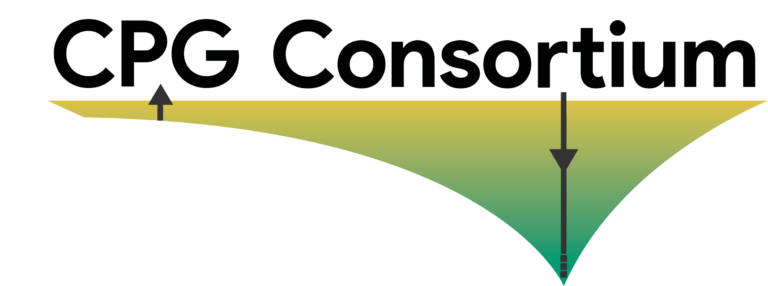
Mailing Address
Jan Niederau
Geothermal Energy & Geofluids
Institute of Geophysics
NO F 57
Sonneggstrasse 5
CH-8092 Zurich Switzerland
Contact
| Phone | +41 44 632 0813 |
| nijan(at)ethz.ch |
Administration
| Dominique Ballarin Dolfin | |
| Phone | +41 44 632 3465 |
| ballarin(at)ethz.ch | |
Publications
[Go to Proceedings Refereed] [Go to Proceedings Non-Refereed] [Go to Theses]
Underlined names are links to current or past GEG members
REFEREED PUBLICATIONS IN JOURNALS
6.
Niederau, J., J. Fink, and M. Lauster, Connecting Dynamic Heat Demands of Buildings with Borehole Heat Exchanger Simulations for Realistic Monitoring and Forecast, Advances in Geosciences, 56, pp. 45-56, 2021. https://doi.org/10.5194/adgeo-56-45-2021 [Download] [View Abstract]Space heating is a major contributor to the average energy consumption of private households, where the energy standard of a building is a controlling parameter for its heating energy demand. Vertical Ground Source Heat Pumps (vGSHP) present one possibility for a low-emission heating solution. In this paper, we present results of building performance simulations (BPS) coupled with vGSHP simulations for modelling the response of vGSHP-fields to varying heating power demands, i.e. different building types. Based on multi-year outdoor temperature data, our simulation results show that the cooling effect of the vGSHPs in the subsurface is about 2 K lower for retrofitted buildings. Further, a layout with one borehole heat exchanger per building can be efficiently operated over a time frame of 15 years, even if the vGSHP-field layout is parallel to regional groundwater flow in the reservoir body. Due to northward groundwater flow, thermal plumes of reduced temperatures develop at each vGSHP, showing that vGSHPs in the southern part of the model affect their northern neighbors. Considering groundwater flow in designing the layout of the vGSHP-field is conclusively important. Combining realistic estimates of the energy demand of buildings by BPS with subsurface reservoir simulations thus presents a tool for monitoring and managing the temperature field of the subsurface, affected by Borehole Heat Exchanger (BHE) installations.
5.
Elison, P., J. Niederau, C. Vogt, and C. Clauser, Quantification of thermal conductivity uncertainty for basin modeling, AAPG Bulletin, 103/8, pp. 1787-1809, 2019. https://doi.org/10.1306/12181818038 [Download]
4.
Niederau, J., F. Wellmann, and N. Börsing, Analyzing the influence of correlation length in permeability on convective systems in heterogeneous aquifers using entropy production, Geothermal Energy Science – Society – Technology, 7/35, 2019. https://doi.org/10.1186/s40517-019-0151-6 [Download] [View Abstract]Hydrothermal convection in porous geothermal reservoir systems can be seen as a double-edged sword. On the one hand, regions of upflow in convective systems can increase the geothermal energy potential of the reservoir; on the other hand, convection introduces uncertainty, because it can be difficult to locate these regions of upflow. Several predictive criteria, such as the Rayleigh number, exist to estimate whether convection might occur under certain conditions. As such, it is of interest which factors influence locations of upwelling regions and how these factors can be determined. We use the thermodynamic measure entropy production to describe the influence of spatially heterogeneous permeability on a hydrothermal convection pattern in a 2D model of a hot sedimentary aquifer system in the Perth Basin, Western Australia. To this end, we set up a Monte Carlo study with multiple ensembles. Each ensemble contains several hundred realizations of spatially heterogeneous permeability.
The ensembles only differ in the horizontal spatial continuity (i.e., correlation length) of permeability. The entropy production of the simulated ensembles shows that the convection patterns in our models drastically change with the introduction and increase of a finite, lateral correlation length in permeability. An initial decrease of the average entropy production number with increasing lateral correlation length shows that fewer ensemble members show convection. When neglecting the purely conductive ensembles in our analysis, no significant change in the number of convection cells is seen for lateral correlation lengths larger than 2000 m. The result suggests that the strength of convective heat transfer is not sensitive to changes in lateral correlation length beyond a specific factor. It does, however, change strongly compared to simulations with a homogeneous permeability field. As such, while the uncertainty in spatial continuity of permeability may not strongly influence the convective heat transfer, our findings show that it is important to consider spatial heterogeneity and continuity of permeability when simulating convective heat transfer in an aquifer.
3.
Niederau, J., A. Ebigbo, G. Marquart, J. Arnold, and C. Clauser, On the impact of spatially heterogenous permeability on free convection in the Perth Basin, Australia, Geothermics, 66, pp. 119-133, 2017. https://doi.org/10.1016/j.geothermics.2016.11.011 [Download] [View Abstract]We study the impact of spatially heterogeneous permeability on the formation and shape of hydrothermal porous flow convection in the Yarragadee Aquifer by modelling three simulation scenarios, each with differing permeability distributions. In all scenarios, the southern part of the model is characterised by convection rolls, while the north is dominated by a stable region of decreased temperatures at depth due to hydraulic interaction with shallower aquifers. This suggests that reservoir structure is a first-order controlling factor for the formation of the free con- vective system. The convective system adjusts to the spatially heterogeneous permeability distribution, yielding locally different convection patterns.
2.
Ebigbo, A., J. Niederau, G. Marquart, I. Dini, M. Thorwart, W. Rabbel, R. Pechnig, R. Bertani, and C. Clauser, Influence of depth, temperature, and structure of a crustal heat source on the geothermal reservoirs of Tuscany: numerical modelling and sensitivity study, Geothermal Energy, 4/5, 2016. https://doi.org/10.1186/s40517-016-0047-7 [Download] [View Abstract]Granitoid intrusions are the primary heat source of many deep geothermal reservoirs in Tuscany. The depth and shape of these plutons, characterised in this study by a prominent seismic reflector (the K horizon), may vary significantly within the spatial scale of interest. In an exploration field, simulations reveal the mechanisms by which such a heat source influences temperature distribution. A simple analysis quantifies the sensitivity of potentially measurable indicators (i.e. vertical temperature profiles and surface heat flow) to variations in depth, temperature, and shape of the heat source within given ranges of uncertainty.
1.
Seidler, R., K. Padalkina, H.M. Buecker, A. Ebigbo, M. Herty, G. Marquart, and J. Niederau, Optimal experimental design for reservoir property estimates in geothermal exploration, Computational Geomechanics, 20/375, 2016. https://doi.org/10.1007/s10596-016-9565-4 [Download] [View Abstract]During geothermal reservoir development, drilling deep boreholes turns out to be extremely expensive and risky. Thus, it is of great importance to work out the details of suitable borehole locations in advance. Here, given a set of existing boreholes, we demonstrate how a sophisticated numerical technique called optimal experimental design helps to find a location of an additional exploratory borehole that reduces risk and, ultimately, saves cost. More precisely, the approach minimizes the uncertainty when deducing the effective permeability of a buried reservoir layer from a temperature profile measured in this exploratory borehole. In this paper, we (1) outline the mathematical formulation in terms of an optimization problem, (2) describe the numerical implementation involving various software components, and (3) apply the method to a 3D numerical simulation model representing a real geothermal reservoir in northern Italy. Our results show that optimal experimental design is conceptually and computationally feasible for industrial-scale applications. For the particular reservoir and the estimation of permeability from temperature, the optimal location of the additional borehole coincides with regions of high flow rates and large deviations from the mean temperature of the reservoir layer in question. Finally, the presentation shows that, methodologically, the optimization method can be generalized from estimating permeability to finding any other reservoir properties.
[back to Top of Page]
PROCEEDINGS REFEREED
4.
Niederau, J., A. Ebigbo, and M. Saar, Characterization of Subsurface Heat-Transport Processes in the Canton of Aargau Using an Integrative Workflow, Proceedings World Geothermal Congress 2020, (in press). [View Abstract]In a referendum in May 2017, Switzerland decided to phase out nuclear power in favor of further developing renewable energy sources. One of these energy sources is geothermal energy, which, as a base-load technology, fills a niche complementary to solar and wind energy. A known surface-heat-flow anomaly exists in the Canton of Aargau in Northern Switzerland. With measured specific heat-flow values of up to 140 mW m-2, it is an area of interest for deep geothermal energy exploration. In a pilot study, which started in late 2018, we want to characterize the heat-flow distribution in the vicinity of the anomaly in more detail to facilitate future assessment of the geothermal potential of this region. To achieve a complete characterization of the heat-flow values as well as their spatial uncertainty, we develop a workflow comprising: (i) assimilation and homogenization of different types of geologic data, (ii) development of a geological model with focus on heat transport, and (iii) numerical simulations of the dominant heat-transport processes. Due to its nature as a pilot study, the developed workflow needs to be integrative and adaptable. This means that data generated during the course of the project can easily be integrated in the modeling and simulation process, and that the generated workflow should easily be adaptable to other regions for potential future studies. One further goal of this project is that the generated models and simulations provide insights into the nature of the heat-flow anomaly in Northern Switzerland and to test the hypothesis that upward migration of deep geothermal fluids along structural pathways is the origin of this particular heat-flow anomaly.
3.
Niederau, J., A. Ebigbo, and M. O. Saar, Characterization of Subsurface Heat-Transport Processes in the Canton of Aargau Using an Integrative Workflow, Proceedings World Geothermal Congress 2020, Reykjavik, Iceland, April 26 - May 2, 2020, 2020. [View Abstract]In a referendum in May 2017, Switzerland decided to phase out nuclear power in favor of further developing renewable energy sources. One of these energy sources is geothermal energy, which, as a base-load technology, fills a niche complementary to solar and wind energy. A known surface-heat-flow anomaly exists in the Canton of Aargau in Northern Switzerland. With measured specific heat-flow values of up to 140 mW m-2, it is an area of interest for deep geothermal energy exploration. In a pilot study, which started in late 2018, we want to characterize the heat-flow distribution in the vicinity of the anomaly in more detail to facilitate future assessment of the geothermal potential of this region. To achieve a complete characterization of the heat-flow values as well as their spatial uncertainty, we develop a workflow comprising: (i) assimilation and homogenization of different types of geologic data, (ii) development of a geological model with focus on heat transport, and (iii) numerical simulations of the dominant heat-transport processes. Due to its nature as a pilot study, the developed workflow needs to be integrative and adaptable. This means that data generated during the course of the project can easily be integrated in the modeling and simulation process, and that the generated workflow should easily be adaptable to other regions for potential future studies. One further goal of this project is that the generated models and simulations provide insights into the nature of the heat-flow anomaly in Northern Switzerland and to test the hypothesis that upward migration of deep geothermal fluids along structural pathways is the origin of this particular heat-flow anomaly.
2.
Niederau, J., J. F. Wellmann, and N. Börsing, How the Spatial Continuity of Permeability Affects Hydrothermal Convection: A Study Using Entropy Production, Proceedings World Geothermal Congress 2020, Reykjavik, Iceland, April 26 - May 2, 2020, 2020. [View Abstract]With active convection in a reservoir, regions of upflow in convective systems can increase the geothermal energy potential of said reservoir; on the other hand, convection introduces uncertainty, because it is difficult to locate these regions of upflow. Several predictive criteria, such as the Rayleigh number, exist to estimate whether convection might occur under certain conditions. Once a convection system is established, diagnostic measures are needed for describing the convection pattern, e.g. the likely number of upwelling regions. We use the thermodynamic measure called entropy production to describe the influence of spatially heterogeneous permeability on a hydrothermal convection pattern in a hot sedimentary aquifer in the Perth Basin, Australia. To this end, we analyze the entropy production in multiple ensembles in a Monte Carlo study. Each ensemble contains several hundred realizations of spatially heterogeneous permeability. By observing the measure of entropy production, we see that the convection patterns in our models drastically change with the introduction and increase of a finite correlation length in permeability. An initial decrease of the average entropy production number with increasing lateral correlation length indicates that less ensemble members show convection. When neglecting the purely conductive ensembles in our analysis, no change in the convection pattern is seen for lateral correlation lengths larger 2000 m. Besides model dimensions, our results show that also the spatial anisotropy of important flow-parameters, such as permeability, is important to be considered if hydrothermal convection is likely to occur in a sedimentary geothermal reservoir system.
1.
Niederau, J., M. Lauster, J. Bruckmann, C. Clauser, and D. Mueller, Coupling Dynamic Heat Demands of Buildings with Borehole Heat Exchanger Simulations
for Realistic Monitoring and Forecast, Proceedings World Geothermal Congress 2020, Reykjavik, Iceland, April 26 - May 2, 2020, 2020. [View Abstract]We present results of building performance simulations coupled with borehole heat exchanger (BHE) simulations for modeling the response of BHE-fields to varying heating power demands. We apply this method to an existing settlement in the Lower Rhine Embayment in Germany, called Neu-Teveren. Buildings in this former military settlement were built in the 1950s and will be extensively retrofitted in the coming years. Thus, it is a prime opportunity to model the impact of retrofitted buildings on the performance and longevity of BHEs. Our simulation results based on multi-year outdoor temperature records show that the cooling effect of the BHEs in the subsurface is about 3 K lower for retrofitted buildings. Further, a layout with one borehole heat exchanger per building can be efficiently operated over a time frame of 15 years, if the BHE-field layout considers regional groundwater flow. Due to northward groundwater flow, thermal plumes of reduced temperatures develop at each BHE, showing that BHEs in the southern part of the model affect their northern neighbors. Changing the layout of the BHE-field increases the performance of individual BHEs.


